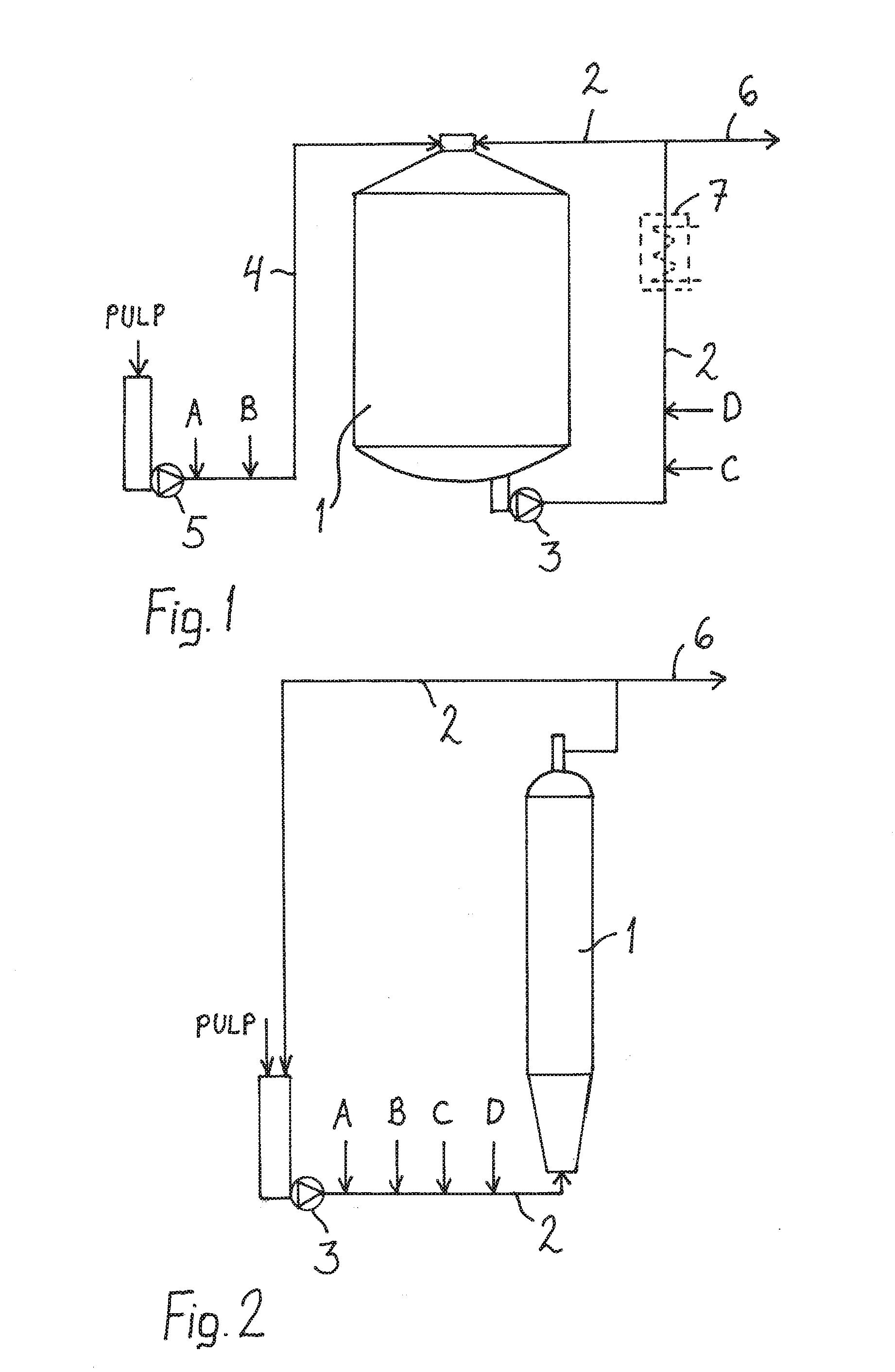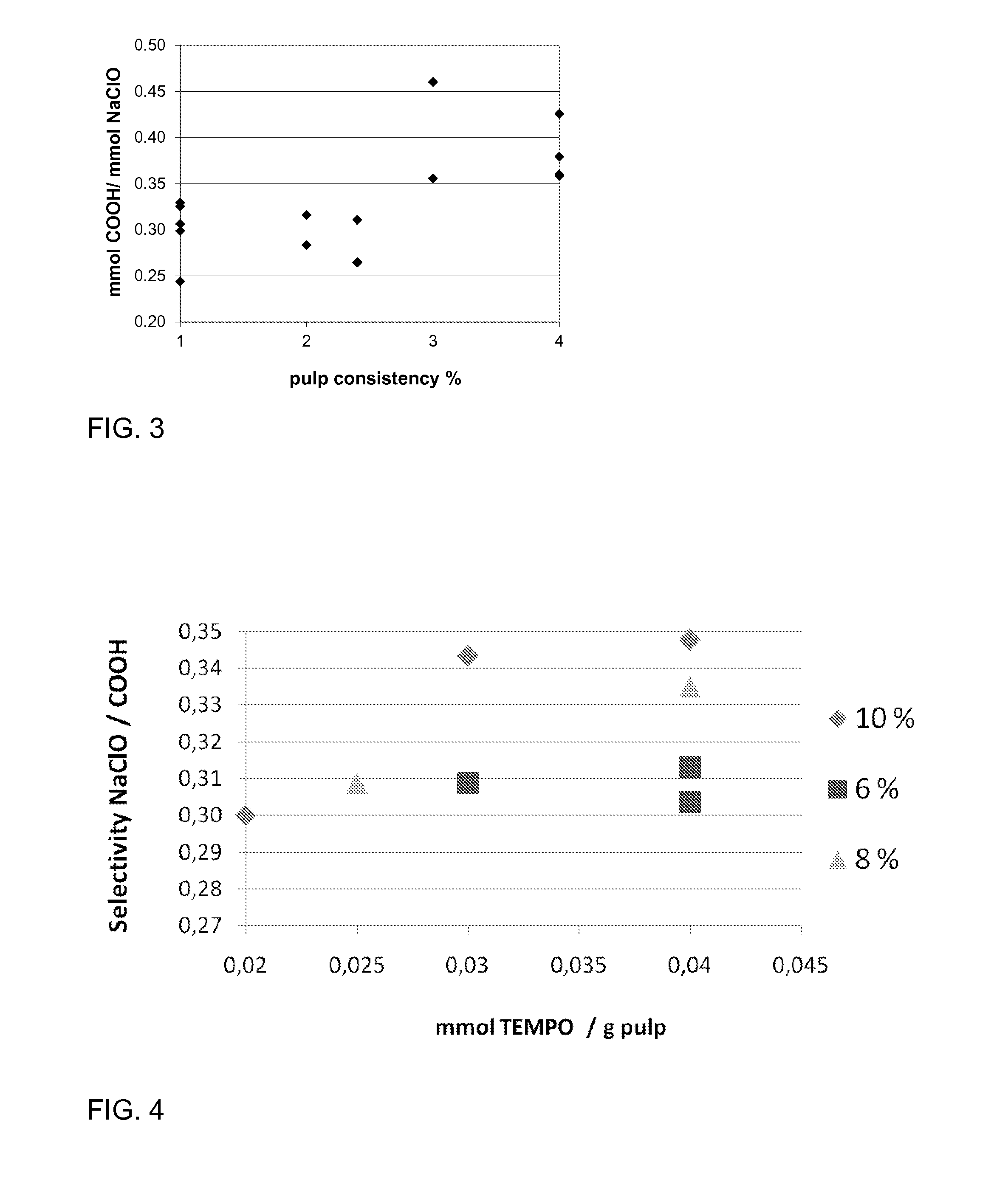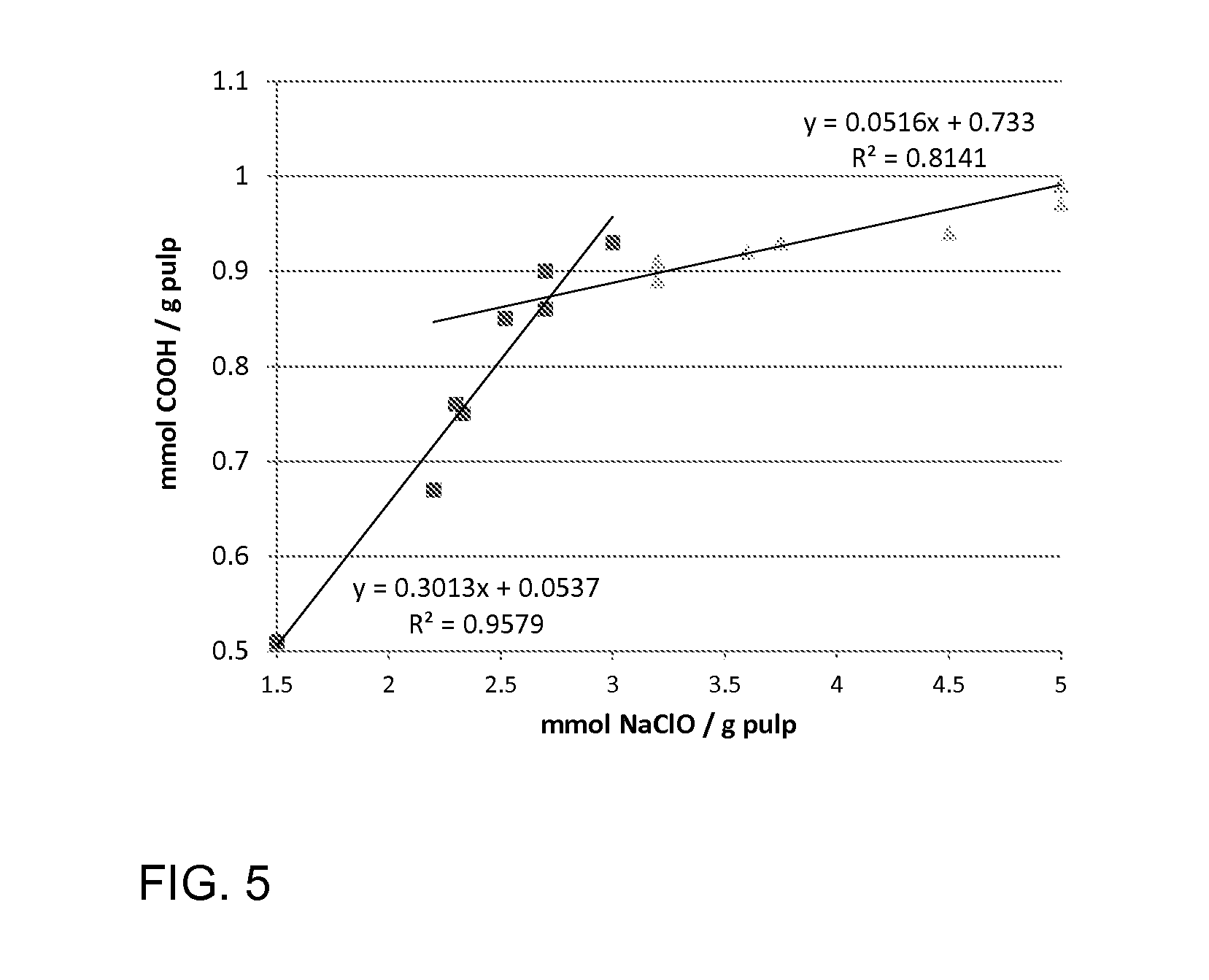Method for catalytic oxidation of cellulose and method for making a cellulose product
a technology of cellulose and catalytic oxidation, which is applied in the directions of yarn, transportation and packaging, textiles and paper, etc., can solve the problems of high water consumption, unfavorable alternative to raising consistency, and really high production costs, and achieve selectively and effectively oxidizing the c-6 hydroxyl groups
- Summary
- Abstract
- Description
- Claims
- Application Information
AI Technical Summary
Benefits of technology
Problems solved by technology
Method used
Image
Examples
Embodiment Construction
[0024]In the following disclosure, all percent values are by weight, if not indicated otherwise. Further, all numerical ranges given include the upper and lower values of the ranges, if not indicated otherwise.
[0025]The primary hydroxyl groups of cellulose are oxidized catalytically by a heterocyclic nitroxyl compound, for example 2,2,6,6-tetramethylpiperidinyl-1-oxy free radical, “TEMPO”. Other heterocyclic nitroxyl compounds known to have selectivity in the oxidation of the hydroxyl groups of C-6 carbon of the glucose units of the cellulose can also be used, and these compounds are widely cited in the literature. Hereinafter, the oxidation of cellulose refers to the oxidation of these hydroxyl groups to aldehydes and / or carboxyl groups. It is preferred that the hydroxyl groups are oxidized to carboxyl groups, that is, the oxidation is complete.
[0026]Whenever the catalyst “TEMPO” is mentioned in this disclosure, it is evident that all measures and operations where “TEMPO” is involv...
PUM
| Property | Measurement | Unit |
|---|---|---|
| temperature | aaaaa | aaaaa |
| mean length | aaaaa | aaaaa |
| mean diameter | aaaaa | aaaaa |
Abstract
Description
Claims
Application Information
 Login to View More
Login to View More - R&D
- Intellectual Property
- Life Sciences
- Materials
- Tech Scout
- Unparalleled Data Quality
- Higher Quality Content
- 60% Fewer Hallucinations
Browse by: Latest US Patents, China's latest patents, Technical Efficacy Thesaurus, Application Domain, Technology Topic, Popular Technical Reports.
© 2025 PatSnap. All rights reserved.Legal|Privacy policy|Modern Slavery Act Transparency Statement|Sitemap|About US| Contact US: help@patsnap.com



